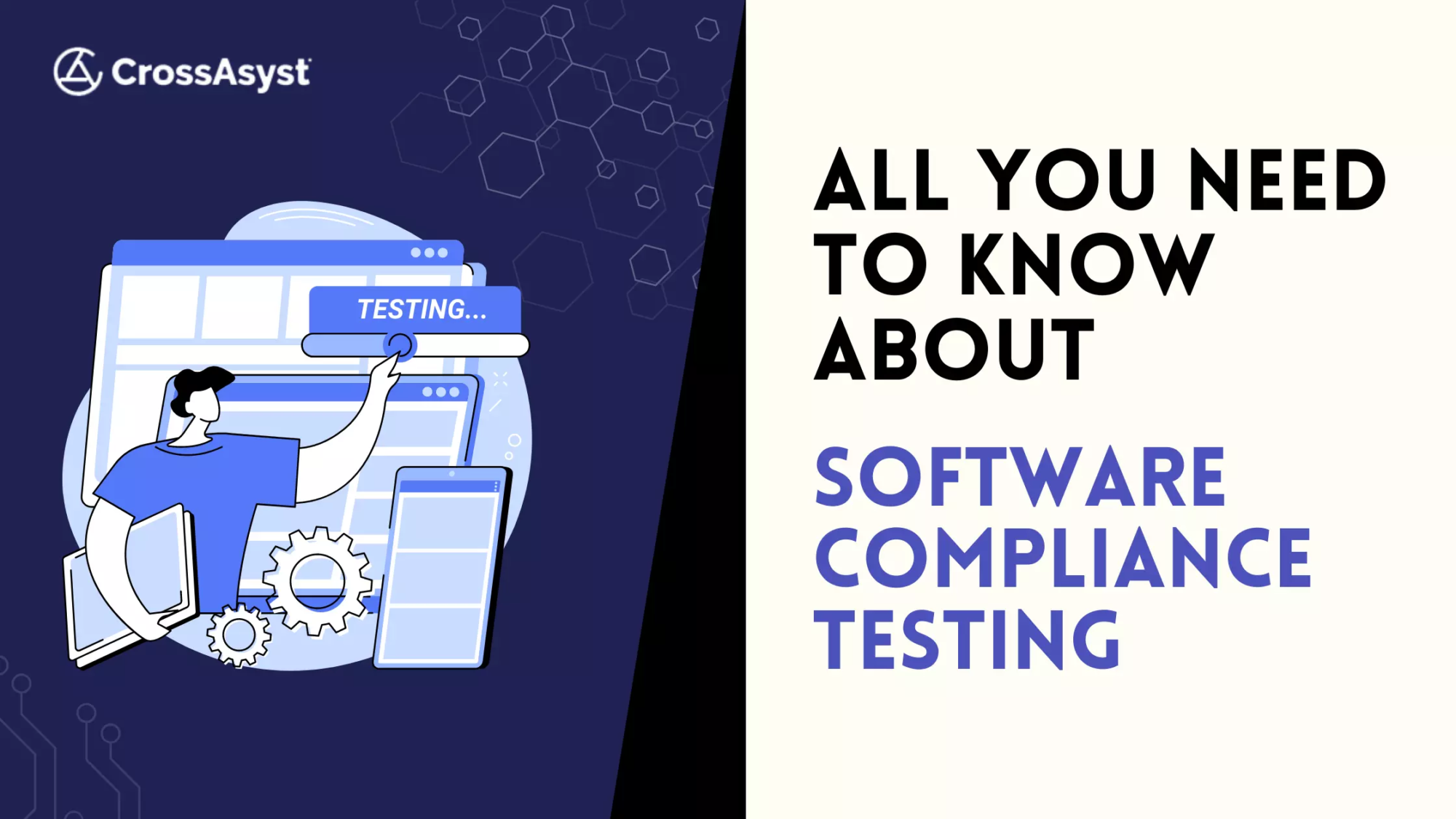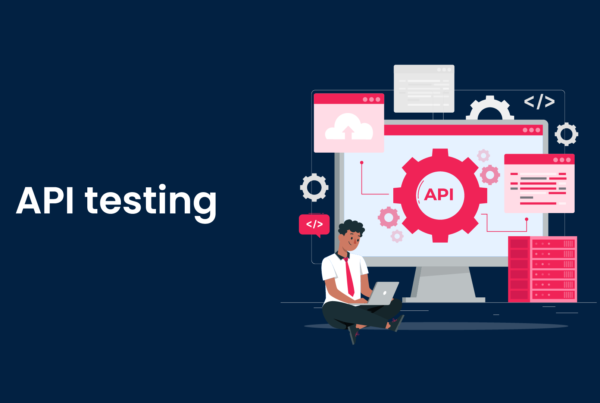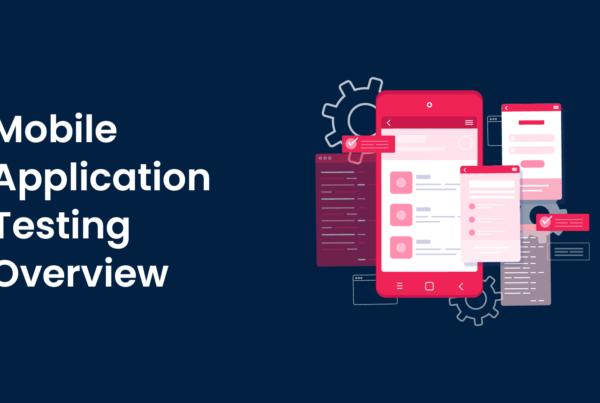Regulations and industry standards in the software industry constantly keep evolving as newer technologies hit the market. This makes it imperative that all new softwares undergo comprehensive software compliance testing before they are released.
But what exactly is software compliance testing? Well, we’ve broken down everything you need to know about software compliance testing in this handy guide.
Table of Contents
What is Compliance Testing?
Compliance testing, or conformance testing, involves verifying whether a software product, process, or system conforms to a defined set of internal or external standards. These standards may include regulations set by regulatory bodies or industry-specific requirements established by organizations.
The primary role of compliance testing is to validate that the software being tested functions according to these standards, ensuring legal compliance and mitigating risks associated with non-compliance.
Importance of Compliance Testing

Compliance testing holds significant importance in ensuring the quality, security, and legality of software products. Here are some key reasons why compliance testing is essential.
Ensuring Legal Compliance
Compliance testing plays a crucial role in helping organizations adhere to laws, regulations, and industry standards. By thoroughly evaluating software against these requirements, compliance testing ensures that organizations operate within legal boundaries.
This not only mitigates the risk of facing legal repercussions and penalties but also fosters a culture of responsibility and accountability within the organization.
Protecting User Data
One of the most critical aspects of compliance testing is safeguarding user data. By verifying data privacy and security measures, compliance testing ensures that sensitive information remains protected from unauthorized access or exploitation.
This not only helps organizations maintain compliance with data protection regulations such as GDPR but also builds trust among users, who can feel confident that their personal information is being handled with the utmost care and integrity.
Avoiding Penalties
Non-compliance with regulatory requirements can lead to significant financial penalties and legal action against organizations. Compliance testing serves as a proactive measure to identify and rectify any deviations from established standards, thereby helping organizations avoid potential penalties.
By conducting thorough compliance testing, organizations demonstrate their commitment to compliance and minimize the risk of costly legal disputes.
Building Trust
Demonstrating compliance with regulatory and industry standards is essential for building trust among users and stakeholders. Compliance testing provides assurance that software products meet established requirements, ensuring transparency and accountability in organizational practices.
This, in turn, enhances the reputation of the organization and strengthens relationships with customers, partners, and regulatory authorities.
Improving Software Quality
In addition to ensuring compliance with legal and regulatory requirements, compliance testing contributes to the overall quality of software products. By identifying and addressing potential issues related to security, accessibility, and performance, compliance testing helps organizations deliver software that is reliable, secure, and user-friendly.
This enhances the user experience and minimizes the risk of software failures or vulnerabilities, ultimately improving the reputation and competitiveness of the organization.
Types of Compliance Testing

Compliance testing encompasses various types, each focusing on different aspects of software functionality and adherence to standards. Here are the primary types of software testing.
Accessibility Testing
Accessibility testing focuses on ensuring that software is accessible and usable by individuals with disabilities, including those with visual or mobility impairments. This type of testing evaluates whether users with diverse needs can effectively navigate and interact with the software interface.
Testers assess factors such as screen reader compatibility, keyboard navigation, color contrast, and alternative text for images to ensure that all users, regardless of their abilities, can access and use the software without barriers.
Security Testing
Security testing is essential for identifying vulnerabilities and weaknesses in software security measures. This type of testing aims to prevent unauthorized access, data breaches, and other security threats that may compromise the confidentiality, integrity, or availability of sensitive information.
Testers employ various techniques such as penetration testing, vulnerability scanning, and ethical hacking to assess the strength of security controls and identify potential risks. By conducting thorough security testing, organizations can strengthen their defenses and protect against cyber threats.
Data Privacy Testing
Data privacy testing focuses on validating compliance with data protection regulations and ensuring the confidentiality and integrity of user data. This type of testing assesses how the software handles and protects sensitive information, such as personally identifiable information (PII) and financial data.
Testers evaluate data encryption, access controls, consent mechanisms, and data retention policies to ensure that user privacy rights are respected and upheld. By conducting data privacy testing, organizations can demonstrate compliance with regulations such as GDPR, CCPA, and HIPAA and mitigate the risk of data breaches and regulatory penalties.
Performance Testing
Performance testing evaluates the performance and scalability of software under different conditions, such as heavy loads or high traffic. This type of testing assesses how the software performs in terms of speed, responsiveness, and resource utilization under various workload scenarios.
Testers measure factors such as response times, throughput, and resource utilization to identify bottlenecks, performance issues, and scalability limitations. By conducting performance testing, organizations can ensure that their software can handle expected levels of usage and maintain optimal performance under peak loads, thus enhancing user experience and satisfaction.
Regulatory Compliance Testing
Regulatory compliance testing verifies adherence to specific legal standards and regulations established by regulatory authorities or industry bodies. This type of testing ensures that software meets the requirements and mandates set forth by regulatory frameworks such as GDPR, HIPAA, PCI-DSS, and SOX.
Testers assess whether the software complies with relevant laws, standards, and industry best practices, such as data protection, financial regulations, and healthcare requirements. By conducting regulatory compliance testing, organizations can mitigate legal risks, avoid penalties, and demonstrate their commitment to ethical and lawful business practices.
The Process of Compliance Testing
The process of compliance testing involves several key steps to ensure thorough validation of software compliance. Here’s a quick look at what they are.
Starting Early
Initiating compliance testing early in the development process allows for timely identification and resolution of issues, preventing potential delays and cost overruns in later stages.
Creating Test Cases
Developing specific test scenarios based on regulatory requirements and industry standards provides a structured approach to compliance testing, ensuring thorough coverage and adherence to relevant guidelines.
Executing Tests
Conducting tests according to predefined test cases ensures comprehensive evaluation of compliance areas, enabling the identification of any deviations or non-compliance issues.
Analyzing Results
Analyzing test findings helps detect non-compliance issues or breaches, facilitating informed decision-making and prioritization of corrective actions.
Reporting Issues
Documenting and reporting compliance concerns or breaches with clear explanations and suggested corrective actions ensures transparency and accountability in the resolution process.
Verifying Fixes
Verifying the effectiveness of remedial actions through retesting of impacted areas ensures that compliance issues are adequately addressed and resolved.
Automating Recurring Tests
Automating repetitive compliance tests streamlines the testing process, improves efficiency, and ensures consistent validation of compliance requirements across multiple iterations.
Performing Regular Audits
Conducting regular audits helps ensure ongoing compliance with regulatory requirements and industry standards, providing assurance of continued adherence and identifying areas for improvement.
Challenges of Compliance Testing and Solutions
[create a graphic using the headings below]
As essential as compliance testing is, it comes with its own challenges. Here are some of these challenges and solutions for them.
Stifling Innovation
Strict compliance requirements may inadvertently stifle innovation and creativity in software development. When organizations are solely focused on meeting compliance standards, there may be less room for experimentation and risk-taking, which are essential for fostering innovation.
To overcome this challenge, organizations should strive to strike a balance between compliance and innovation. Adopting agile methodologies can enable iterative development processes that allow for continuous innovation while still ensuring compliance with regulatory requirements.
Additionally, fostering a culture of innovation within the organization can encourage employees to think creatively and develop innovative solutions that meet both compliance standards and business objectives.
Limited Scope
Compliance testing often focuses on specific regulations or standards, which can leave other areas vulnerable to issues. This limited scope may overlook potential risks and vulnerabilities that exist outside the scope of the testing process.
To address this challenge, organizations should ensure comprehensive coverage of compliance areas by regularly reviewing and updating their testing processes. By expanding the scope of compliance testing to encompass all relevant regulations and standards, organizations can better identify and mitigate risks across the entire software ecosystem.
Resource-Intensiveness
Compliance testing can be resource-intensive, requiring significant investments of time, money, and personnel. The need for thorough testing, documentation, and validation processes can strain organizational resources, particularly for smaller companies with limited budgets and manpower.
To mitigate this challenge, organizations should allocate sufficient resources to compliance testing efforts and invest in automation tools that can streamline the testing process and improve efficiency.
By automating repetitive tasks and leveraging technology to optimize resource utilization, organizations can reduce the burden of compliance testing and ensure more cost-effective and scalable compliance programs.
False Sense of Security
Compliance testing may create a false sense of security, leading organizations to believe they are fully compliant when they may still have vulnerabilities or gaps in their compliance measures. This misconception can leave organizations exposed to potential risks and threats that have not been adequately addressed.
To mitigate this risk, organizations should conduct thorough risk assessments to identify potential areas of weakness and prioritize continuous monitoring and improvement of compliance measures.
By adopting a proactive approach to compliance management and maintaining vigilance against emerging threats, organizations can avoid falling into a false sense of security and better protect themselves against compliance-related risks.
Lack of Flexibility
Compliance testing processes may be rigid and inflexible, focusing solely on specific requirements without allowing for variations or changes in regulatory landscapes or business needs. This lack of flexibility can hinder organizations’ ability to adapt to evolving compliance requirements and address emerging risks effectively.
To address this challenge, organizations should adopt flexible testing methodologies and processes that can accommodate changes in regulatory landscapes and business requirements.
By adopting an agile and adaptive approach to compliance testing, organizations can better respond to changing compliance requirements and ensure that their compliance measures remain effective and up-to-date.
Ensure Compliance and a Stress Free Launch With CrossSsyst
We at CrossAsyst have been building custom software solutions across business domains for over a decade. Our expertise in domains like healthcare ensures that our QA and testing teams are well versed with compliance standards like HIPAA, among others.
With CrossAsyst, you can rest assured that our team will leave no stone unturned to ensure you have a software product that adheres completely or industry-specific regulations and frameworks. To learn more about our full suite of QA and testing services, get in touch with us today!




